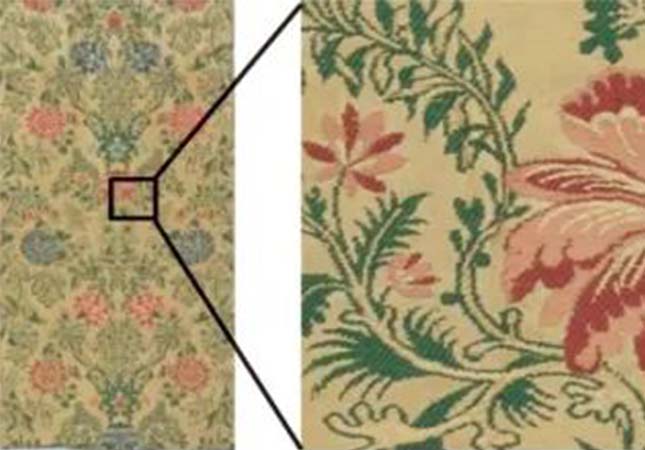In the 18th century, France began to monopolize the production of seasonal clothing textiles, especially in the jacquard loom machine and the jacquard silk weaving industry. French silk finally stood at the forefront of fashion and replaced Italy as the overlord of the European silk-weaving industry. Its silk weaving products have gradually developed from simple, single-species velvet and plain fabrics to complete categories, complex main technologies, and jacquard fabrics in rich colors.
From the 14th century, the French silk industry entered a stage of slow accumulation. In 1466, out of economic considerations, King Louis XI of France decided to develop the national silk industry in Lyon to resist foreign silk imports. Since the 16th century, Lyon has developed into the center of the European silk trade.
At the beginning of the 17th century, Henry IV opened the Bourbon dynasty, and the French silk industry developed rapidly with the support of the state. A large number of skilled silk weavers from Milan, Lucca, and other places brought advanced technology, French weavers began to no longer rely on Italy for product development and production, especially the silk produced in Lyon gradually developed its unique style. In the late 17th century, Lyon design has become the main source of patterns used in Italy and other European silk weaving centers. From "bizarre" to naturalistic style, under the cultivation of talents, constant style innovation makes France become a European fashion trend weather vane.
18th-19th Century French Silk Weaving Technology Change
1. Changes in Pattern Drawing Technology for Patterning and Stereoscopic Patterns
Similar to the patterns of the Ming and Qing Dynasties in China at the same time, the French silk weaving patterns in the early 18th century were all expressed through blocks and planarization. The performance of each color is also in the form of blocks. For example, the cultural relics collected by the China National Silk Museum—France’s early 18th-century flower-patterned silk. The fabric is based on beige, and there are tall flower trees arranged vertically on the top, the whole is mainly beige and green, and there are blue, pink, and red flowers in some parts. Each flower has 2 to 3 shades of the same color to perform.
The flower design is detailed by the gradient color from deep red, and pink to white, using the shuttles of 3 colors of dark red, pink, and white during the weaving process, it needs to dig the flower patterns by hand on the block surface and weaving back and forth to achieve the effect.
The expression of branches and flowers is patterned, with a deformed natural plant design, while there are obvious blocks between colors without blending colors.
In the 1830s, French silk weaving master Jean Rive's dot dyeing method applied more light and shadow processing techniques in Western painting in pattern design, which made the pattern present a three-dimensional effect. Different from the division of color block surface and block surface in pattern design, the three-dimensional shadow is expressed through the transition of the same color in the weaving process, and there is no obvious dividing line in the part of the color transition of flower pattern makeup, but the yarns of 2 colors are mixed, the color transition is natural, and the pattern is three-dimensional and full.

The mentioned design completely got rid of the flat effect of the original flat pattern, making the pattern three-dimensional and vivid. Most of these kinds of products use three-dimensional patterns of flowers, fruits, and buildings as elements, and most of them are distributed in rhombus shapes.
This style is also called the "Jean Rive style". From the point of view of weaving technology, it borrowed from the expressive technique of stitches in embroidery, through tissue changes, breaks the original limitation of one set of weft threads showing color on the surface, and changes to 2 sets of weft threads showing color on the surface at the same time, which enriches the fabric color. Express. This style of fabric was an important innovation for the development of French silk weaving technology. Around the 1830s, the fabric style changed significantly, and it became an important comparison standard for fabric dating.




